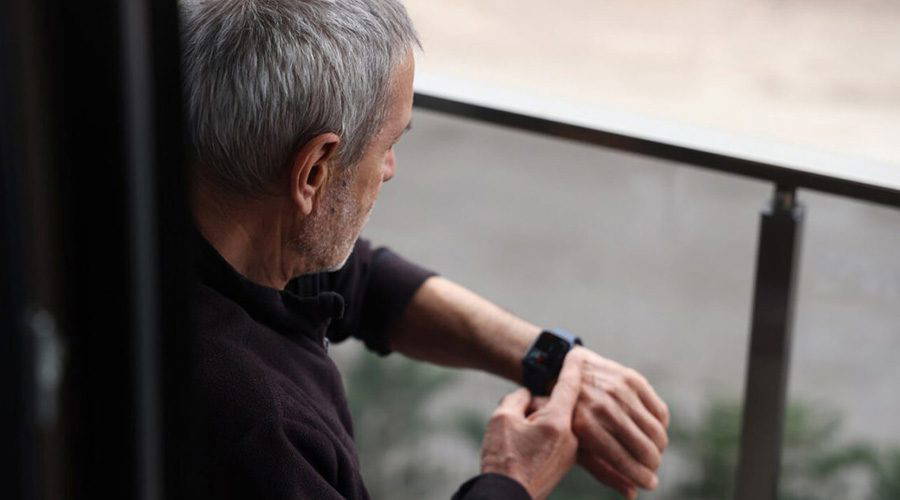Do Smartwatches Accurately Detect Atrial Fibrillation (AFib)?
Healthline
By Eileen Bailey on October 14, 2022
Fact checked by Maria Gifford
- Researchers say smartwatches can detect many cases of atrial fibrillation
- However, they add that there are limitations to their use, and they aren’t as accurate as diagnostic tools in a medical facility.
- Experts say smartwatches are best used as a screening tool and any irregularities should be followed up with a visit to your doctor.
Smartphones are now able to detect atrial fibrillation (AFib) through an electrocardiogram (ECG) app.
A new study published in the Canadian Journal of Cardiology reports that smartwatches can indeed increase the detection of AFib. However, researchers said limited battery life and lack of immediate feedback may decrease the app’s efficacy.
A study done earlier this year reported the Apple Watch’s diagnosis of AFib was accurate when testing people with similar clinical profiles. The new recent study examined the accuracy when testing people with abnormal ECGs.
“With an expected 50 million Apple Watches sold this year alone and since the automatic detection of [AFib] is performed every time a consumer registers an ECG, this technology is already widely in use,” said Dr. Marc Strick, the study’s lead author and a cardiologist at Bordeaux University in France, specializing in cardiac implantable electronic devices.
“More and more healthcare professionals are embracing this technology. Still, its application within clinical practice remains limited due to reimbursement issues, lack of organization, and algorithm limitations,” he noted.
Details from the study
There were 734 hospitalized participants in the study who underwent a 12-lead ECG followed by a 30-second Apple Watch ECG recording. The smartwatch classified the recordings as:
- No signs of atrial fibrillation
- Atrial fibrillation
- Inconclusive reading
The smartphone recordings were then blindly viewed by an electrophysiologist who classified them as follows:
- Atrial fibrillation
- Absence of AFib
- Diagnosis unclear
A second electrophysiologist interpreted 100 randomly selected ECG recordings to determine the extent of the agreement between the two readings.
In one out of five (20 percent) incidents, the Apple Watch failed to produce an automatic diagnosis. The researchers reported that the risk of a false negative was higher in people with premature atrial and ventricular contractions, sinus node dysfunction, and either second or third-degree atrioventricular block.
“The accuracy of monitoring via smartwatches doesn’t match other clinical methods,” said Dr. Adrian Baranchuk, FACC, a professor of medicine at Queen’s University in Ontario, Canada, and the co-author of an editorial accompanying the published study.
“Surface 12-lead ECGs remain the ‘gold standard of care’ with much higher accuracy – around 98 to 99 percent.”
Some of the reasons noted for inaccurate readings were:
- Premature atrial and ventricular contractions are common forms of abnormal heart rhythms. Both can trigger extra heartbeats.
- Sinus node dysfunction, also called sick sinus syndrome, results in an abnormal atrial heart rate.
- People with atrioventricular blocks may have palpitations, irregular heartbeats, or feel like they missed a heartbeat. They can also experience light headedness, shortness of breath, fainting, chest pain, and fatigue
The risk of a false negative was also higher in people with other heart rate abnormalities and implanted pacemakers.
The researchers reported that the smartphone app correctly identified 78% of people with an AFib incident and 81% of those who didn’t. Comparatively, the electrophysiologists identified 97% of people with AFib and 89% of those without it.
The smartwatch app was likelier to give a false positive in people with premature ventricular contractions. It also failed to identify atrial tachycardia – a heart rate of more than 100 beats per minute – and atrial flutter – when the upper chamber beats too fast.
“There is a role these devices can play in healthcare,” Dr. Adam Skolnick, a pediatric cardiologist and associate professor in the Department of Medicine at NYU Langone Health, told Healthline. “But they have a long way to go before they are considered a stand-alone tool for monitoring heart conditions, such as AFib.”
The researchers suggest that better algorithms and machine learning will improve the smartwatch’s ability to identify and discriminate between heart conditions.
“I recommend it for my patients for multiple reasons,” Dr. Brian Kolski, DFACC, FSCAI, an interventional cardiology and vascular specialist at the Orange County Heart Institute in California, told Healthline. “Although it is inconclusive in determining why there is an abnormal heart rhythm, it is very predictive in letting people know that they are in normal rhythm, which is helpful. It is also very accurate on heart rates. I have prescribed it for some of my patients and had their health insurance pay for it.”
Watches as a screening tool
“Apps for smartwatches are consumer-grade applications. The Apple Watch is a screening tool, not a diagnostic one. Diagnostic tools in medical facilities are medical grade,” explained Dr. Andrew M. Freeman, a cardiologist in the Division of Cardiology and Department of Medicine at National Jewish Health.
“The apps have gotten better, but they aren’t there yet. There are, however, some ways that the smartwatch apps are helpful.”
“The apps encourage people to be more involved in their health and healthcare,” Freeman told Healthline. “When people see the results, they are more apt to change their behaviors. The app pushes people to do more for their health and to check with their doctor when there are irregular results. I recommend my patients use the devices because of the benefit that they are more apt to make lifestyle modifications and adopt healthier habits.”
He added that one of the concerns in using the device is the chance of a person will misinterpret the results.
“The smartwatch application is good at identifying AFib when there are no other reasons for abnormal heart rates,” Freeman said.
“However, it isn’t as good when other heart conditions create problems. When non medical people are trying to interpret the results, there is a chance of misinterpretation or even panic. It is essential for anyone using smartwatches to monitor AFib to talk to their doctor about any results they aren’t sure about and to share them with their doctor regularly.”

